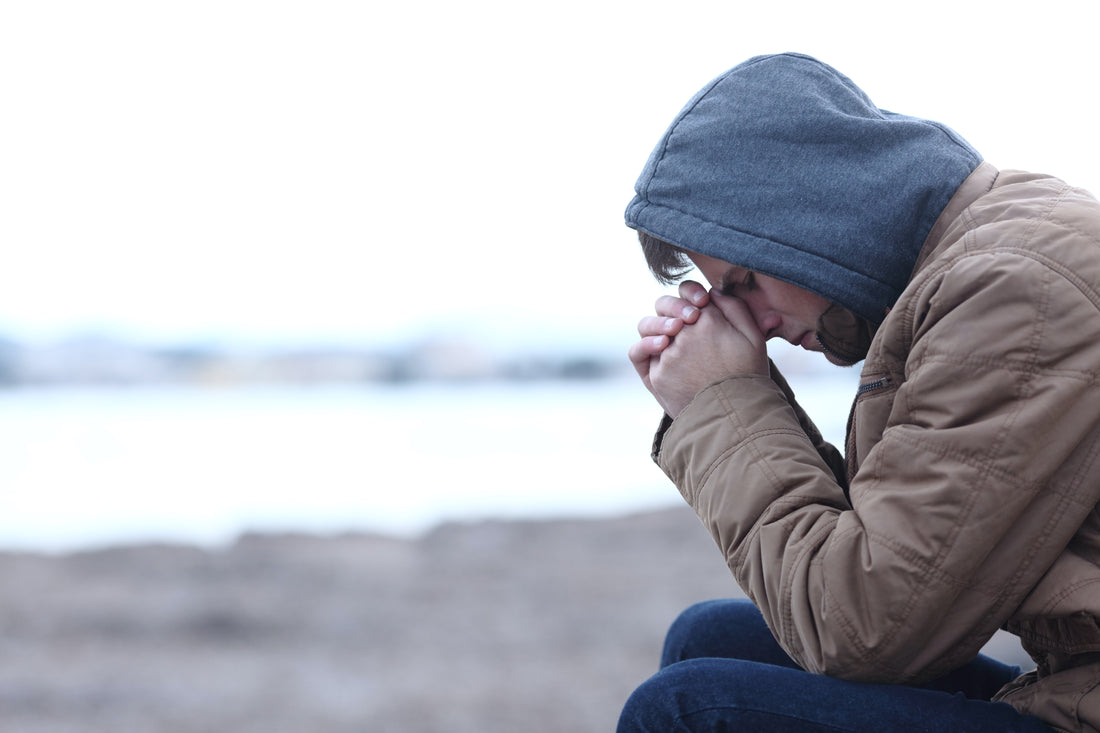Many of us have heard about seasonal depression, which typically occurs during the winter months, but can the seasons also trigger anxiety? Find out how cold weather causes or worsens anxiety and how to deal with seasonal anxiety disorder when it strikes.
Cold Weather & Anxiety
For some, the arrival of cold weather doesn’t just make people think of building snowmen or lounging by a cozy fire. According to Jason Moser, associate professor of psychology at Michigan State University and anxiety researcher, winter weather can cause anxiety for five main reasons: driving in dangerous conditions, air travel in extreme conditions, missed work/school, poor heating, and childcare concerns during school cancellations.1 Though the winter months typically trigger depression in around five percent of adults in the U.S., many individuals also suffer from anxiety during the winter, which seems to have been exacerbated by the COVID-19 pandemic.2 As New York-based psychologist Julia Bartz writes Psychology Today, “Single people, in particular, may be vulnerable to winter anxieties,” because many of those who wish to be in relationships are feeling the “stress of lost time.”3
For some individuals, it’s the lack of sunlight during winter that causes anxiety symptoms. Research shows that sunlight may trigger the synthesis of serotonin, which is associated with mood regulation.4 During the winter, there is generally less sunlight, which explains why this 2014 study found that individuals with seasonal affective disorder (SAD) had lower serotonin activity in the winter.5 Low serotonin levels have been linked to depression as well as anxiety.6
Are Panic Attacks Seasonal?
Though panic attacks often happen at random, studies show that the prevalence of panic attacks seems to be higher during winter months, with many patients with panic disorder having comorbid seasonal affective disorder.7
This study of a 30 year-old female patient with panic disorder found that her attacks were more frequent and severe during the months of October to May with spontaneous remissions during the months of June to September.8 This prompted the researchers to conclude that seasonal panic disorder may be a variant of SAD, with some forms of panic disorder being related to phase instability of the body’s circadian rhythms.
The Pendulum of Seasonal Depression
Since seasonal depression and seasonal anxiety rise and fall each year in a somewhat predictable manner, there are ways to prepare for the arrival of symptoms. Talk to a healthcare provider as soon as possible if you start to notice a change in your mood when the seasons shift. It’s also helpful to implement healthier lifestyle changes before symptoms begin like those shared in the next section.
It’s important to note that seasonal affective disorder doesn’t just affect winter months. While winter-pattern seasonal affective disorder typically brings symptoms of depression, weight gain, oversleeping, and social withdrawal, summer-pattern seasonal affective disorder may be more likely to trigger anxiety, insomnia, restlessness, or even aggressive behavior.9
How to Deal with Seasonal Anxiety Disorder
Because researchers have noted a link between lower serotonin activity and seasonal affective disorder, some doctors prescribe antidepressant medications or anti-anxiety medications to ease their symptoms. However, many of these pharmaceutical drugs come with side effects that may be undesirable to users, such as headache, nausea, diarrhea, and weight changes. These drugs may also lead to dependency and withdrawal side effects. Before resorting to prescription drugs, you may want to consider making some lifestyle changes first to help to ease symptoms of anxiety and seasonal affective disorder during the winter months. These include:
- Getting more light: According to Michael J. Rice, PhD, a professor of psychiatric nursing at the Nebraska Medical Center in Omaha, one way to prepare for the arrival of seasonal affective disorder symptoms is to set your internal clock earlier each morning. He suggests having 10,000 lux lighting installed in your kitchen area and eating your breakfast under bright light as early as late autumn.10 You can also try light therapy, in which you expose yourself to bright light by sitting a few feet from a special light box within the first hour of waking up each day.
- Follow a healthy diet: Though you may crave sugar or lose your appetite completely, try your best to make sensible eating choices to get the vitamins and minerals your body needs. This includes leafy greens, whole grains, nuts, fatty fish, and foods rich in B vitamins. And since 95 percent of our serotonin receptors are found in the gut, incorporating probiotics into your diet can also be highly beneficial.11
- Exercise: Exercise is a powerful way to increase the availability of important anti-anxiety neurochemicals, which include serotonin, gamma aminobutyric acid (GABA), brain-derived neurotrophic factor (BDNF), and even endocannabinoids.12
- Get adequate sleep: Sleep deprivation creates an imbalance in hormone levels that fuel anxiety levels. Practice good sleep hygiene such as going to bed at the same time, getting up at the same time, and minimizing caffeine and screen time before bed.
- Practice mindfulness and relaxation techniques: Mindfulness practices like meditation have been shown to ease anxiety and mental stress, while also improving sleep.13
If you find that you still need help, consider taking Brillia, a non-prescription medication that uses targeted antibodies to the brain-specific S100B protein, which is a key regulator of mood. Studies show that feelings of anxiety, restlessness, and irritability stem from an imbalance of this protein. Brillia works by attaching to the S100B protein and stopping it from instigating symptoms of anxiety, while normalizing the level of feel-good neurotransmitters like dopamine, norepinephrine, and serotonin in different parts of the brain. This process is achieved without any off-target effects and without causing dependency. It is also completely safe to take alongside other prescription drugs and supplements if you are currently taking any.
Brillia works best in combination with healthy lifestyle factors like proper nutrition, adequate sleep, controlled screen time, and mindfulness practices as outlined in our 5-Pillar methodology. Find out more about how Brillia works.
We’ll share helpful tips, the latest studies and personal experiences.


 No prescription.
No prescription.


